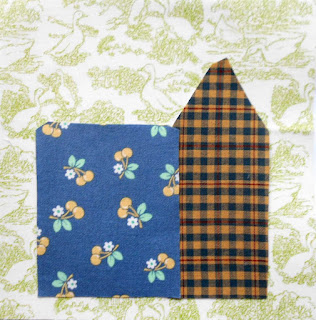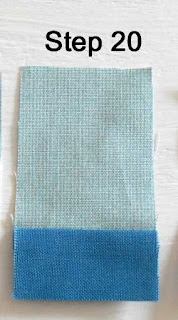 |
| Patchsmith Sampler Block 43 - Chain Link |
This
week’s Patchsmith Sampler sew-along block is all about placement. The stitching of Block 43 ‘Chain Link’ isn’t
difficult – just squares and rectangles.
However, the block depends on you placing those squares and rectangles correctly.
The pattern diagrams show four primary colours but you may choose instead to use four different patterns or four shades from the same colour.
The pattern diagrams show four primary colours but you may choose instead to use four different patterns or four shades from the same colour.
 |
| All Patchsmith patterns come with easy-to-follow colour diagrams |
Whether you use primary, solid or patterned fabrics there are several ways you can ensure you get the placement correct.
 |
| Use four fabrics from the same collection for this fun block. |
I find laying my pieces out onto the worktable in the order that they will appear in the final block works just fine (use the colour placement chart at the beginning of the pattern instructions).
Alternatively
you could colour four small paper squares using red, green, blue and yellow
pencils. Sort the four fabrics once you
have cut all the shapes. Then simply
position a coloured square on top of each of the four fabrics to correspond
with the placement chart.
 |
| For this block four simple coloured squares work well to keep the fabrics sorted |
A
quicker way is to use Alphabitties available from The Fat Quarter
Shop - they are handy for a whole range of projects.
 |
| Alphabitties - a great quilting tool from the FQS |
Once
you have sorted your fabrics, simply follow the block directions and diagrams
to create a unique Chain Link block.
I
would love to see a copy of your block over on Instagram (#block43chainlink) or
in the Flickr group.
Next week we will be making Block 45 - 'St Louis Star' as we have already completed Block 44 'Autumn Daisy' when we made Block 35 - Topiary Tree.
Next week we will be making Block 45 - 'St Louis Star' as we have already completed Block 44 'Autumn Daisy' when we made Block 35 - Topiary Tree.
A VERY HAPPY
NEW YEAR
























































